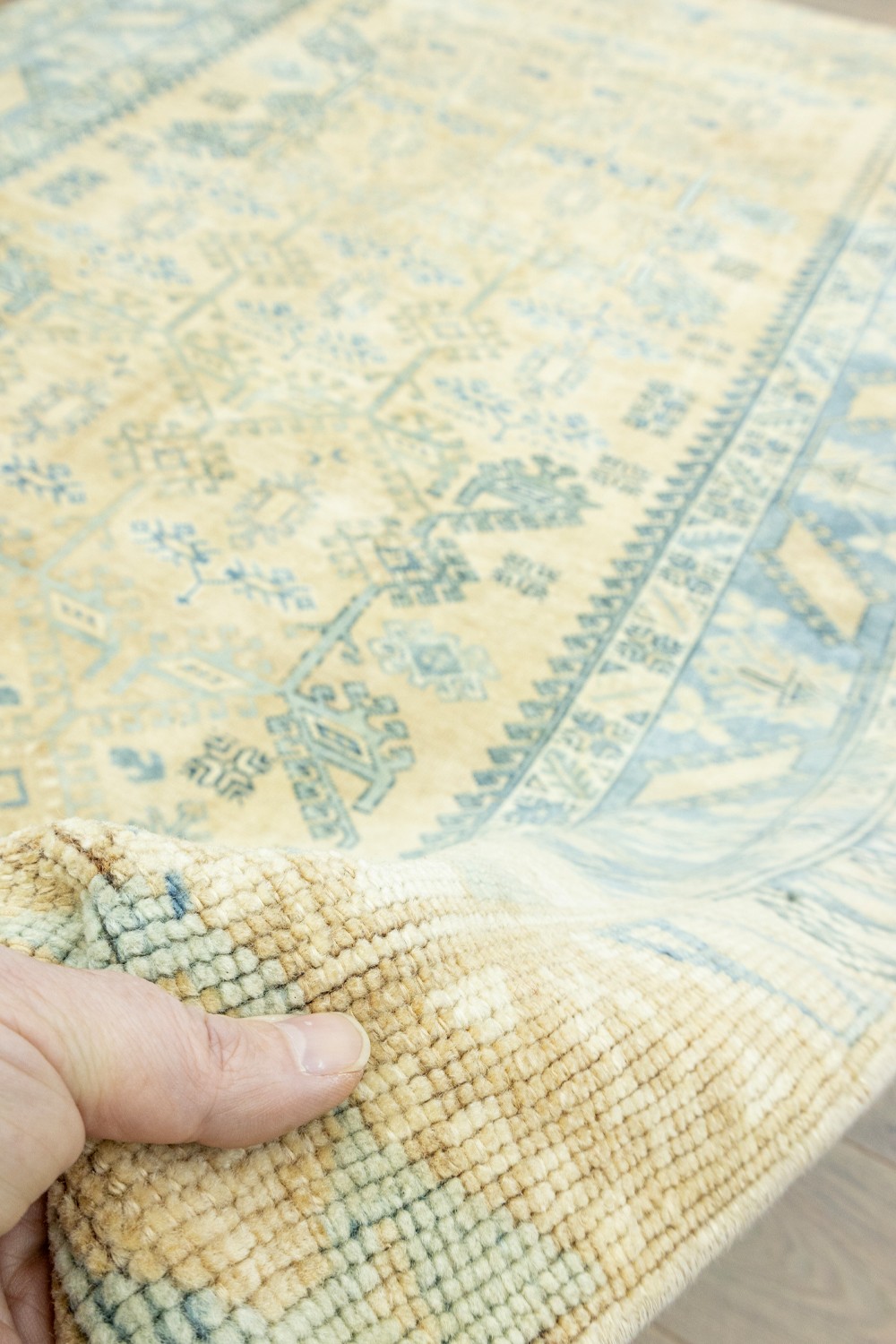The types of rugs, that we encounter with different examples from Central Asia to the present day and are among the important needs of human history, are divided into 2 groups hand-woven rugs and machine-made rugs. The hand-woven technique, one of the oldest weaving techniques, started to be produced by nomadic communities; in the past, it was preferred mainly for functional reasons in cold geographical conditions. Today, it still attracts demand mainly due to reflecting the traces of history and its superior durability. Although the production process of hand-woven rugs adapts to the changes brought by time, it is fundamentally produced as a result of knotting the threads with each other. Therefore, the quality of the resulting product parallels the quality of the yarn type. Thus, hand-woven rugs, which contain so much labor and are equally durable, are always more costly compared to machine-made rugs.

How to Identify Hand-Woven Rugs?
It is possible to see many hand-woven rugs introduced in the market. However, it is a matter of curiosity how to understand if the product is a genuine hand-woven rug. The simplest way to determine if a rug is hand-woven is to examine the back of the product. The presence of knots frequently woven on the backside of the model on the front side of the hand-woven rug indicates that the rug has been crafted by a skilled hand. Although this may seem similar to machine-made rugs, there is actually a slight difference. When the backside of a machine-made rug is turned over, it does not have knots, and the designs consist of symmetrical shapes. In hand-woven rugs, however meticulously crafted they may be, there is noticeable asymmetry. It is possible for the patterns to have an asymmetrical design, along with different color transitions due to the use of natural dyes.
Hand-woven rugs are undoubtedly the best choice for those who appreciate naturalness and seek nostalgia in their home or workplace. Achieve perfect harmony with the rustic decoration style where comfort takes precedence.